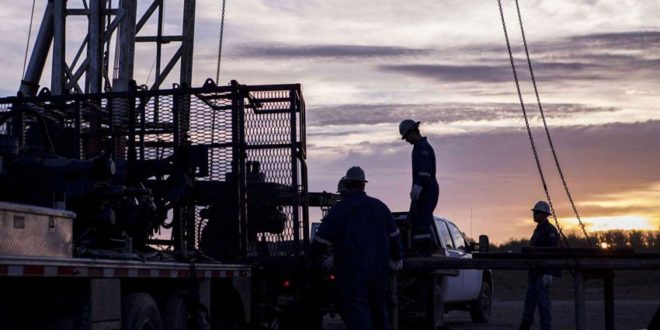Oil and natural gas exploration plunged to an all-time low as the economic and industrial dislocations from the Covid-19 pandemic snuffed out the remnants of the American shale boom.
Drilling in U.S. oil and gas fields retreated by 34 rigs this week to 374, led by a precipitous drop in crude exploration that sank to levels not seen since before the shale-oil revolution kicked off at the beginning of the last decade.
Energy companies are in a full-on retreat as the historic slump in crude markets prompts widespread job cuts, budget reductions, contract cancellations and well shut-ins. In the span of just eight weeks, 53% of active American oil and gas rigs have gone dark, according to data released by Baker Hughes Co. on Friday.
This is an unprecedented downturn, EOG Resources Inc. CEO Bill Thomas said during a conference call with analysts. U.S. oil production is in severe decline and it could take years for domestic production to turn around. We believe that the historic and prolific oil-production growth by U.S. shale may have been forever altered.
Benchmark American oil futures have dropped 63% from the 2020 high of $65.65 a barrel in early January as the worldwide pandemic slashed demand for petroleum-based fuels at a time when the global surfeit was already expanding. On April 20, the price cratered to minus $40.32.
The historic downturn will drastically reduce capital available to the industry, said Thomas, who leads the world’s second-largest independent explorer by market value.
Baker Hughes’ weekly rig tallies have been a key oil-industry metric for decades because of the close correlation between drilling activity and crude production. U.S. oil output has fallen by 1.2 million barrels a day, or 9.2%, since touching 13.1 million in the second week of March. The combined oil- and gas-drilling figure released Friday was unrivaled in data going back to 1975.
Fracing — the more expensive process of blasting a mix of water, sand and chemicals into drilled wells to finally unleash the oil and gas trapped in the shale rock — is also in retreat. The number of frack crews working in the U.S. fell by 8 to 47, marking a new record low for a count that’s been compiled since the start of 2014, according to industry consultant Primary Vision Inc
In this week’s frack-crew data, released late Friday, the Permian Basin of West Texas and New Mexico saw the greatest number of cutbacks. Seven crews were dropped there, leaving 32 still working in the world’s biggest shale patch.
 Iran Energy News Oil, Gas, Petrochemical and Energy Field Specialized Channel
Iran Energy News Oil, Gas, Petrochemical and Energy Field Specialized Channel




